My grandfather Alexander — we called him Apus, the Hungarian word for Papa — was a gentle man. Every morning Apus toasted his bread and buttered it right up to the edge all around so as not to waste even the crust. He cut each filterless Pall Mall cigarette in half before he smoked it to not waste any precious tobacco. He lived next door with my grandmother and spent most of his old age either in the apartment or in the park nearby. People said he was senile. His life was limited, but it did not have to be. I don’t remember my grandmother being burdened by caring for him, but she must have been. She did not need to be.
Today, communities around the country are giving people with dementia a life worth living and alleviating the burden of their care partners by joining a movement called It Takes a Village. In an Alzheimer’s-friendly “village,” there are weekly museum tours with specially trained guides who know how to engage even those with memory challenges in stimulating conversation. In the Alzheimer’s-friendly “village,” there are planned conversations at a coffee shop each week, Alzheimer’s-friendly poetry readings at the public library, group story creation at the local bookstore, cooking classes at a centrally located restaurant, and safe and organized walks in a nearby park.
It Takes a Village programs are organized by trained staff and a volunteer Village Advisory Board made up of those interested in providing everyone in the community access to public venues like these — their human right.
It Takes a Village is the brainchild of Sean Caulfield and myself of the Massachusetts-based I’m Still Here Foundation, an organization committed to promoting and raising funds for nonpharmacological ways to provide a worthwhile life for people living with dementia. Each Village event is carefully developed to be Alzheimer’s-friendly, based on tested communication approaches described in my easy-to-read book I’m Still Here (Penguin/Avery, 2009) and developed and tested in Alzheimer’s-friendly programs in museums, movie theatres, libraries and other venues by ARTZ: Artists for Alzheimer’s programs, organized by Sean Caulfield, the Foundation’s creative director.
Developed initially for the London suburb of Barnet, the first It Takes a Village program in the U.S. was established in Brookline, Massachusetts, in 2011, with support from the Brookline Community Foundation, the McCance Family Trust, the LLewellyn Foundation, the Jane Cook Trust, the Cummings Foundation, and the Massachusetts Cultural Council. Programs are free to the public and available weekly and monthly at the Coolidge Corner Theatre, the Lars Anderson Auto Museum, Panera Bread coffee shop, the public library, the community arts center, and even the local yoga studio.
Today, other towns and cities are working with the I’m Still Here Foundation to set up It Takes a Village programs. They include Seattle, WA; Birmingham, AL; Philadelphia, PA; Cincinnati, OH; Sacramento and San Francisco, CA; and the Boston, MA, communities of Roxbury and Watertown.
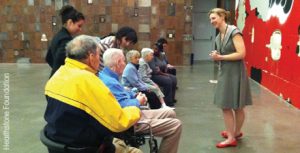
A guide leads engaging and interactive discussions fostering self-expression, creative thinking and reminiscence.
What does it take to establish an It Takes a Village program? First, it takes a transformation in how we see Alzheimer’s and dementia. At present the popular view is that Alzheimer’s is the worst thing that can happen to a person as they age — a loss of personality, memory, mind and self. Once diagnosed, this popular view holds that the person just isn’t there. This despairing and mostly false view stops most care partners and people facing dementia from even trying to find meaningful things to do in their lives. Fortunately, more and more people are realizing that there is life after a diagnosis, inspired by public figures like singer Glen Campbell and Tennessee basketball coach Pat Summit admitting they have Alzheimer’s. After abandoning despair, and with this more positive viewpoint as ammunition, people are beginning to approach this disability with curiosity and creativity.
Second, it takes a community commitment to be part of the solution to dementia instead of part of the problem. Being part of the solution means learning how to engage with people living with this condition, even learning a whole new way to communicate. Being part of the solution means reaching out to those with dementia where they live to encourage them to take part in community events — to consciously include them rather than just passively accept them. Being part of the solution means embracing (I know this is a frighteningly positive word in this situation) dementia and Alzheimer’s as a present and real part of our society.
Third, it takes individuals in our communities who are in touch with their deep compassion and empathy for others less well off — in this instance in terms of health and cognitive capacities. It takes overcoming our natural fear of future disability, abandoning our natural hope for eternal life, and accepting our collective humanity and attendant frailty. It is easy to do this with children — they each have a future. When children are ill, we are incredibly compassionate and do all we can to give them a life worth living. It is more difficult to do this for the very old who, even if we try to think of them as vital members of society, keep reminding us of the end of our own lives — something we would rather not confront. If we are to be inclusive in our communities, we need to include everyone, ourselves too, in our compassion.
What does an It Takes a Village community look like? Typically, you’ll see a storefront that people pass with posted information about the many programs available for people with dementia in that town or city. Pictures of engaged participants — care partners and people with dementia — line the walls along with an exhibition of framed artworks generated at events. There are young and old volunteers arranging events and taking phone and computer reservation for painting classes, circus visits, and a host of other activities.
In an It Takes a Village community, you may see a group of older people walking into a movie theatre at 11 in the morning when most theaters are closed, and groups of elders sitting along the first base line at a minor league baseball game. You will read about these events in the local paper, and there will be interviews with participants, care partners, hosts and performers that media outlets air to publicize the It Takes a Village program.
We must find ways to forestall the impact and the cost of the tsunami of dementia care that is almost upon us. The most promising way is to face it head on, transform the challenge into a positive life-enhancing force, and come together as a community — a village — to engage, amuse, enliven, and altogether give people with dementia a life worth living. We each have the energy and creativity. Our communities have the resources. All it takes is a decision to act — and the will to do so.
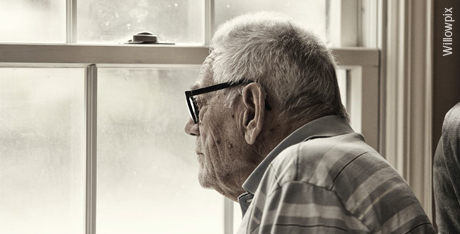

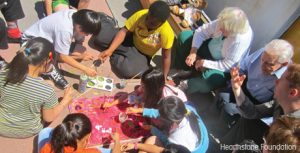
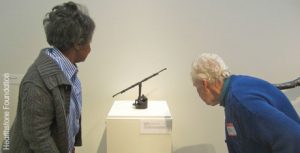
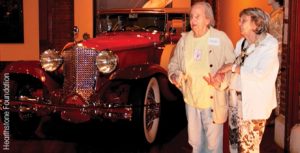


Sources